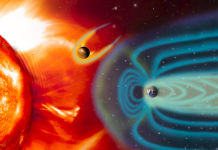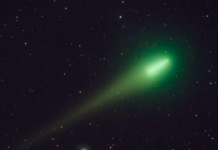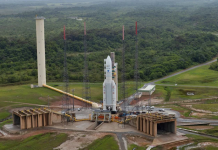Scientists at the Andalusian Institute of Astrophysics (IAA-CSIC) have found the first clues to understand violent short-duration flares from a compact star of rare category called magnetar located thirteen million light years away.
These compact stars with the most intense magnetic field suffer violent eruptions that are still little known to scientists due to their unexpected nature and short duration.
The group of scientists headed by Alberto J Castro-Tirado from the IAA-CSIC studied an eruption in detail that helped them measure different oscillations, or pulses during the instants of highest energy, which are a crucial component in understanding giant magnetar flares.
This is the first extragalactic magnetar studied in detail.
Shashi Bhushan Pandey from Aryabhatta Research Institute of Observational Sciences (ARIES), an Institute of the Department of Science and Technology worked closely with Alberto Castro-Tirado and other group members in this research that has been published in the journal Nature.
When massive stars like supergiant stars with a total mass of between 10 and 25 solar masses collapse they might form neutron stars. Among neutron stars stands out a small group with the most intense magnetic field known: magnetars. These objects, of which only thirty are known so far, suffer violent eruptions that are still little known due to their unexpected nature and short duration of barely tenths of a second.
“Even in an inactive state, magnetars can be many thousands times more luminous than our Sun. But in the case of the flash we have studied, GRB2001415, which occurred on April 15, 2020 and lasted only around one tenth of a second, the energy that was released is equivalent to the energy that our Sun radiates in one hundred thousand (100,000) years. The observations revealed multiple pulses, with a first pulse appearing only about tens of microseconds, much faster than other extreme astrophysical transients,” said Castro-Tirado.
“Detections of giant flares from magnetars are extremely rare. This eruption has provided a crucial component in understanding how magnetic stresses are produced in and around a neutron star,” concluded Castro-Tirado.
Scientists have long been intrigued by such short and intence bursts — transient X-ray pulses of energies several times that of the Sun and length ranging from a fraction of a few millisecond to a few microseconds.
“Continuous monitoring of magnetars in nearby galaxies will help understand this phenomenon, and will also pave the way to learn more about fast radio bursts, today one of the most enigmatic phenomena in astronomy”, said Shashi Bhushan Pandey, one of the co-authors of this article.















